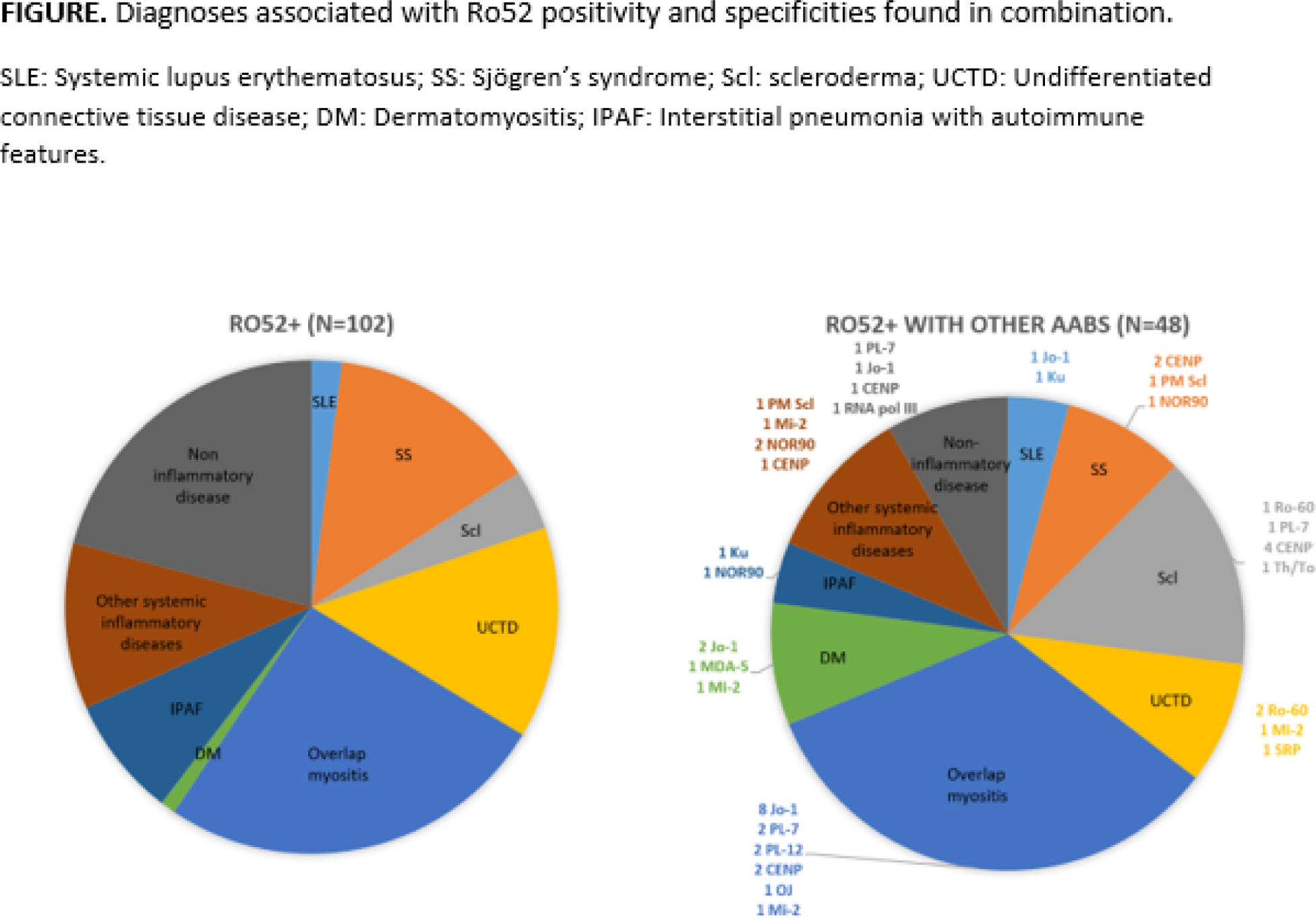

Background: Anti-SSA/Ro autoantibodies (aAbs) can target Ro60 and Ro52 antigens. The presence of anti-Ro60 aAbs has been widely described in patients with systemic autoimmune rheumatic diseases (SARDs). Nevertheless, the clinical implication of anti-Ro52 aAbs for the diagnosis and management of SARDs is still unclear.
Objectives: To assess the possible clinical associations of anti-Ro52 antibodies in patients with SARDs.
Methods: Between November 2017 and November 2023, a total of 150 patients in our hospital tested positive for anti-Ro52 aAbs, and their clinical features were collected. Patients were divided into 2 groups: 1) isolated anti-Ro52 + 2) antiRo52+ with other aAbs. A comparative study between groups was performed.
Results: 150 patients (115 women/35 men; mean age 62.47±13.73 years) with anti-Ro52+ aAbs were identified. Final diagnosis were: anti-synthetase/overlap myositis (n=42), undifferentiated connective tissue disease (UCTD) (n=18), Sjögren’s syndrome (n=18), other systemic inflammatory diseases (n=16), scleroderma (n=11), interstitial pneumonia with autoimmune features (IPAF) (n=10), systemic lupus erythematosus (n=5) and dermatomyositis (n=5). In 25 (16.66%) patients the diagnosis of inflammatory diseases was finally ruled out. 102 patients were classified in the isolated Ro52+ group and 48 in the Ro52+ with other aAbs. Isolated Ro52+ aAbs were more frequently associated with malignancy (p=0.04), while Raynaud’s phenomenon was more commonly found in patients with anti-Ro52+ and other aAbs+ (p=0.02) (Table 1). Differences in diagnoses between both groups as well as the specificities combined with anti-Ro52 are shown (Figure 1).
Conclusion: Anti-Ro52 aAbs determination has clinical implications in the diagnosis of SARDs.
REFERENCES: NIL.


Acknowledgements: NIL.
Disclosure of Interests: None declared.